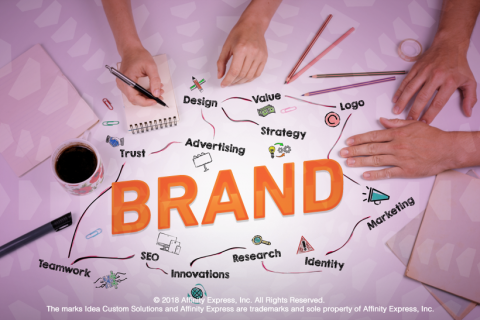Branding: it’s not just for high-profile businesses. The definition of branding is “the marketing practice of creating a name, symbol or design that identifies and differentiates a product from other products.” As a small business, you can have great products, services and employees but still struggle. The problem could be that your brand isn’t buttoned up. Here are a few dos and don’ts for mastering the art of branding.

- DON’T believe your small business can do without it. Small businesses are jumping on the brand bandwagon these days and it’s becoming increasingly important, as consumers are savvier than ever. Consumers look at more than just storefronts. They see logos, websites, packaging and promotional materials. All these elements contribute to the brands of small businesses and set them apart from others competing for the same consumer dollars.
- DO establish brand guidelines. The items Entrepreneur says falls within brand guidelines are the logo (both an overarching logo and any logo lockups your company uses for individual product lines), brand colors, taglines, fonts and typography, “voice” used in your branded materials, imagery, mascots and spokespeople. Dismissing brand guidelines for your company or your clients,’ businesses will undermine the consistency and direction needed for success.
- DON’T overcomplicate the logo. When building brand identities, the temptation is strong to add more to logos than what is truly needed. Say no to using a rainbow of colors and eight different fonts. Check out the multiple logos the Coca-Cola company went through before settling on its simple, iconic script. For more tips on creating a logo, read our post for the “4 Rules to Designing a Great Logo".
- DO hire professionals. Hire a brand manager and don’t leave your logo and typeface to amateur designers. By hiring the right people, you are laying the foundation for a strong brand for you or your customers’ businesses.
- DON’T use the wrong message (with the wrong voice to the wrong audience). Although you don’t have to use all three at once, the incorrect message, voice or audience alone are deadly to your business if not correctly defined. You should also be looking ahead and anticipating what your audience wants to hear. Matt Hillman, a creative director and guest contributor to B2B Marketing, advises “. . . you need to be continually surveying your customers — and your prospects! — for the fresh insights needed to build a message that’s relevant today, not just yesterday.”
Idea Custom Solutions is ready to help you and your clients define brands for business. With great quality and the most reliable turn times for logo design, you can count on Idea Custom Solutions to help you get brands up-to-speed and on target!

Add new comment